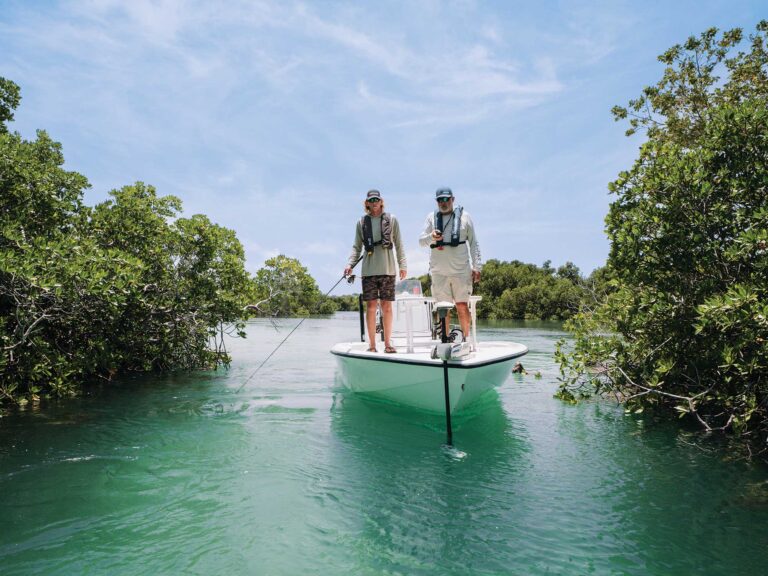The wind is blowing and you’re boating. Should you retreat for calmer waters? If it’s choppy but safe, no. Experts say fish are easiest to find along shores taking the full brunt of the breeze. Here’s how to take advantage of a good situation.
Stirring the Pot
Wind-blown currents stir the water’s nutrients like a ladle in a simmering pot of gumbo and rouse the predatory instinct of bass, walleye and crappie, among other gamefish.
“A steady breeze, especially prior to a passing front, is prime time for drifting and trolling lures for multispecies action,” says Jim Duckworth, a professional guide who favors a slight chop over calm, slick waters for multispecies success. “Wind concentrates the strike zone by pushing the food chain, from baitfish to gamefish, against shorelines.”
Set Yourself Adrift
Setting a drift is as simple as pointing the bow into the wind, and allowing the boat to backtrack across the productive area. Use the engine only to adjust your course. A chart plotter with fishing maps like Fishing Hotspots uploaded helps locate productive structure. Split the screen to show half-GPS and half-sonar to get two views of the productive water. Use a paper fishing chart if you’re sans electronics.
Keep Your Eye on the Pie
“Contour lines and depth changes serve as ambush points for gamefish,” explains Duckworth. “It’s like room service. The fish want to stay in bed while being fed.” To give fish what they want and where they want it, use the wind to troll crankbaits at varying depths. Throw them downwind behind the path of the drift. Braided line gives a better feel for the lure’s action — and the bite — than stretchy monofilament. Mono stretches so much it also reduces hook-setting power.
Line Control
Put one angler forward with the longest rod. This helps prevent crossing and tangling lines with those seated nearest the stern by keeping the front lines farther from the boat. Backseat anglers should have more line out than their forward-seated counterparts — this also keeps lures from hooking each other up.
Boat Control
Use a sea anchor — it looks like an airport windsock — to set a steady drift in windy conditions. Aim the bow downwind, tie the sea anchor to midship cleats. When deployed, the windsock fills with water to create a drag effect, thereby slowing your drift.









